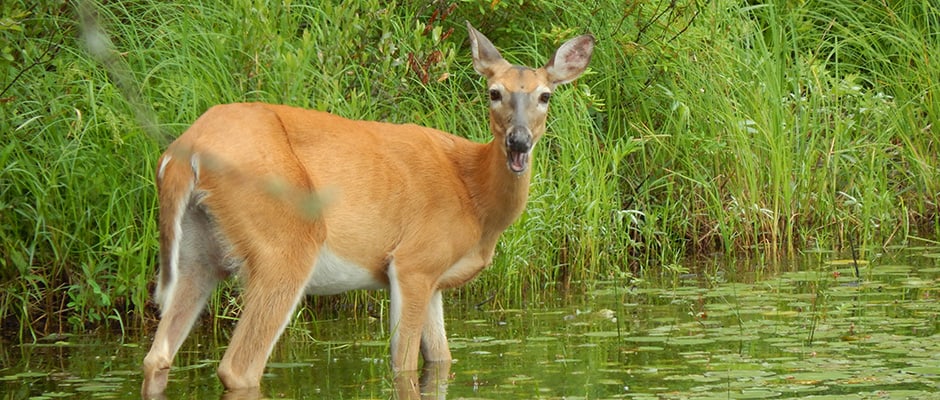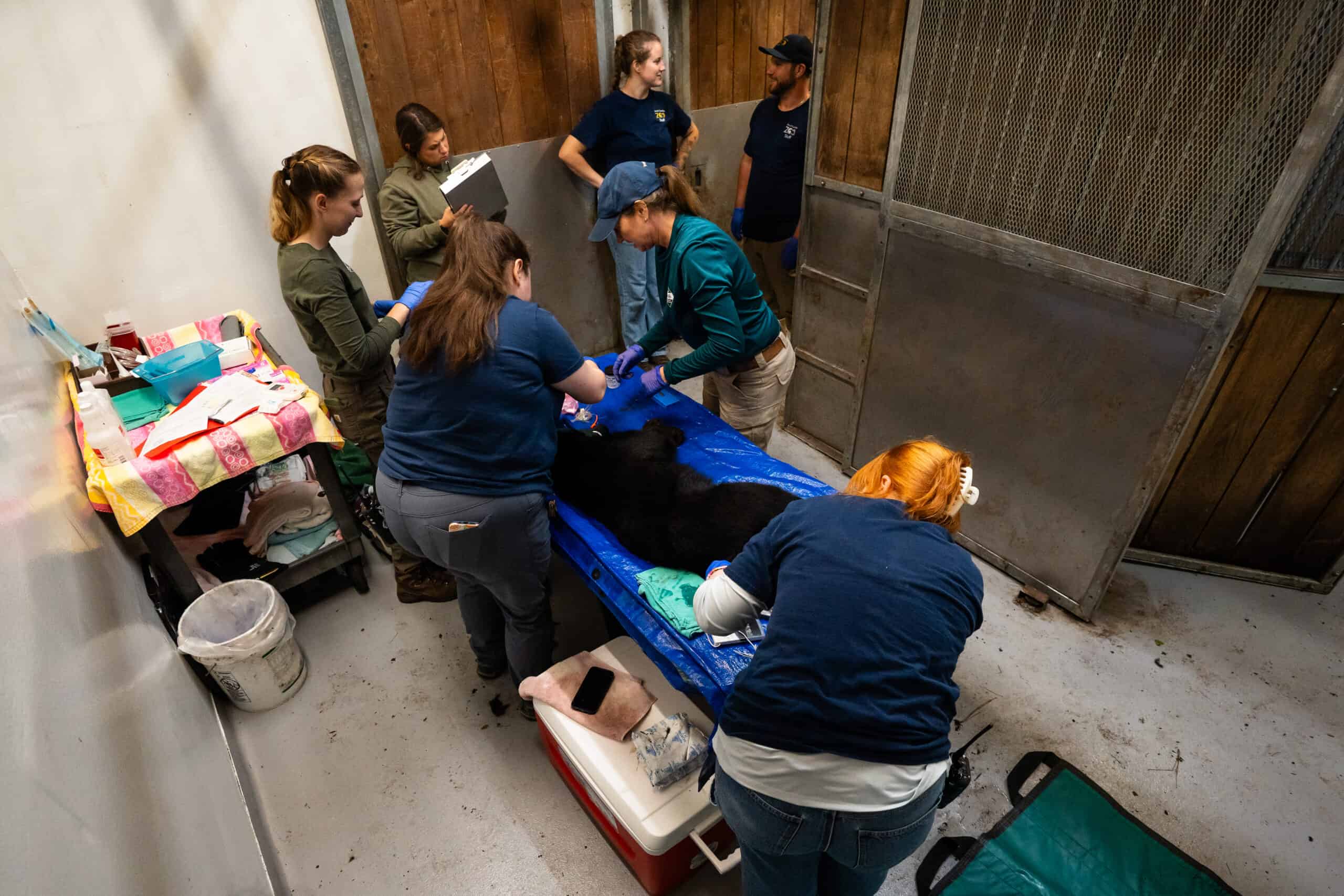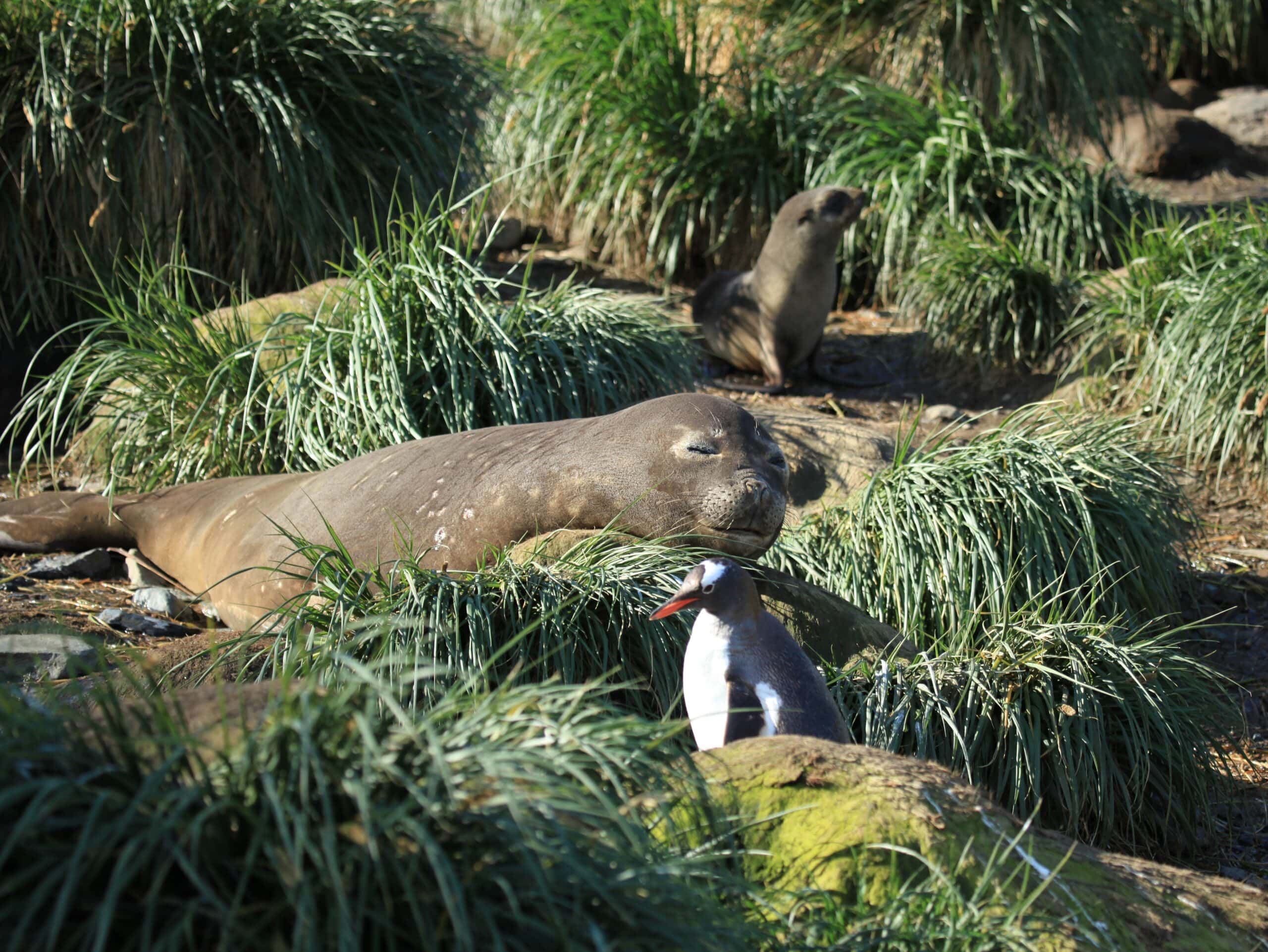Share this article
First Case of CWD in Michigan Deer
Chronic Wasting Disease (CWD), a fatal neurological disease that affects white-tailed deer, mule deer, elk and moose, was confirmed for the first time in a free-ranging white-tailed deer (Odocoileus virginianus) in Michigan last week.
Last month, a homeowner in Ingham County observed a deer showing signs of the illness and reported it to the local Meridian Township Police Department who sent out an officer to euthanize it. “This deer was showing neurological symptoms and was acting differently,” said Steve Schmitt, a wildlife veterinarian at the Michigan Department of Natural Resources (DNR) Wildlife Disease Lab. “You could walk up to it, and it was standing with its head down and was very thin.” The deer’s body was then sent to the DNR’s lab where it went through two standard tests, an immunohistochemistry test and an ELISA test, and tested positive for CWD. Next, it was sent to USDA’s National Veterinary Services Laboratory in Ames, Iowa where CWD was confirmed.
CWD has now been found in free-ranging and captive deer in 23 states in the United States and two Canadian provinces. Although this is the first time CWD has been reported in a free-ranging deer in Michigan, the disease is already established in free-ranging deer populations in 17 other states including Colorado and Wyoming. In order to determine if the disease is already established in Michigan and to possibly prevent it from becoming established if it isn’t, the DNR took action.
“As soon as we found the positive deer, a three-county CWD Management Zone was established around the positive deer,” Schmitt said. The DNR is now planning to complete population estimates of the deer in those counties to determine how many deer need to be tested for CWD.
Tackling the Disease
In order to manage CWD in free-ranging deer, Schmitt said the two main objectives are to reduce the deer population and to keep deer from concentrating at artificial feed sites so transmission is decreased.
Immediately after the test results came back positive, a series of rules were put into place, according to Schmitt. The DNR enforced a feeding and baiting ban to keep deer from concentrating in those sites and is also carrying out mandatory deer checks after people hunt deer to collect as many samples as possible.
Further, the DNR is distributing out-of-season shooting permits (disease control permits) as well as discounting licenses to residents and non-residents. Agency shooting of deer within a two-mile radius circle of the positive deer will provide early samples for testing and reduce the deer population to limit further spread of the disease. They are also recommending throwing out certain parts of deer in CWD management areas since the disease affects the nervous system, especially the brain and spinal cord, Schmitt said. While people can’t contract the disease directly or through consuming venison, people are recommended not to eat infected deer or elk, he said. The DNR is also collecting road-killed deer for testing.
“Numerous people have signed up for disease control permits,” Schmitt said. “Also, there have been 35 deer picked up so far as roadkill.” Schmitt also encourages people who see a deer that’s acting abnormal to call the Report All Poaching (RAP) line, where a conservation officer will come take the deer at any time of the day. There’s also a designated line for people to report roadkill.
“The big question in Michigan is, is this early in the outbreak or is it already established?” Schmitt said. “We found one deer that tested positive, but it is unlikely that we would find the one and only positive deer.”
That’s why the DNR is taking action as quickly as possible. While CWD is not as contagious a disease as avian influenza, it could spread to other animals through direct or indirect contact. And the unique thing about CWD prions is that they’re very resistant and can bind with soil, resulting in environmental contamination. “Once that happens the disease is very difficult to control,” Schmitt said.
Although it isn’t a human safety problem, the DNR says it’s important to control the deer population and to stop it from becoming an established disease in Michigan, if possible.
“We don’t want to waste any time,” he said. “We get one swing at it. It’s not like baseball where you get three strikes. We want to be able to say we did whatever we could to keep the disease from becoming established.
Header Image:
A white-tailed deer stands in the Seney National Wildlife Refuge in Michigan. The first free-ranging deer with Chronic Wasting Disease, a neurological disease that affects deer, elk and moose, was reported in Michigan last week.
Image Credit: Halliegh Marston, USFWS








